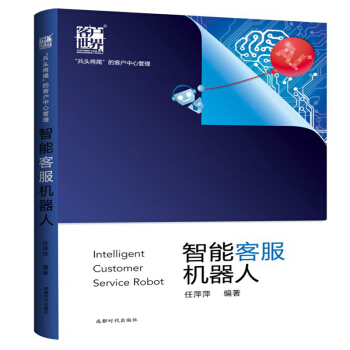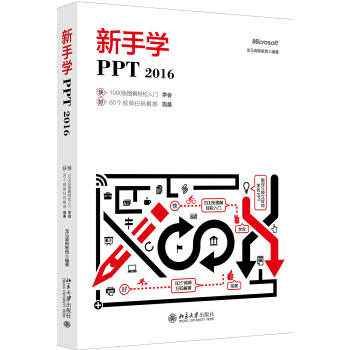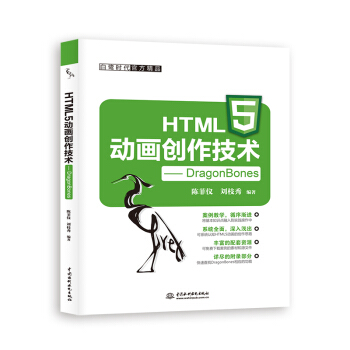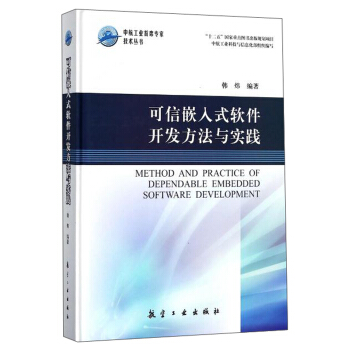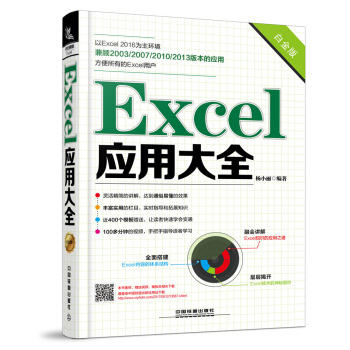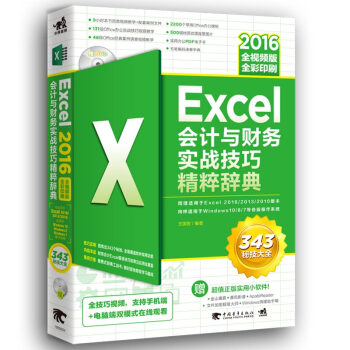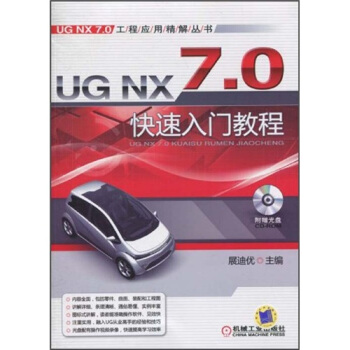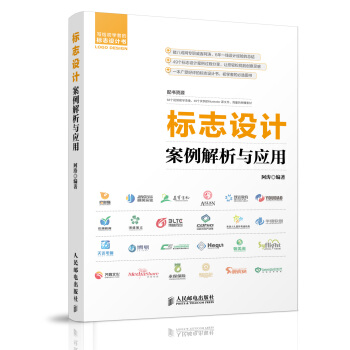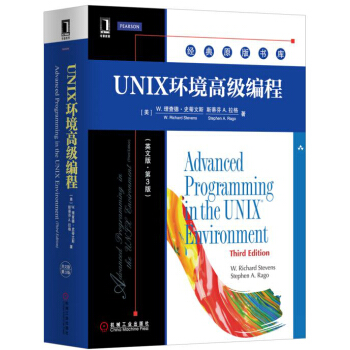![大数据分析:R语言实现(影印版 英文版) [Big data analytics with R]](https://pic.windowsfront.com/12218643/5a20b0ceNce9f568f.jpg)

具体描述
内容简介
大数据分析是检视庞大的复杂数据集的过程,这些数据集通常超出了你所拥有的计算能力。R语言作为数据科学的领军编程语言,包含了诸多功能强大的函数,足以解决大数据处理相关的所有问题。《大数据分析:R语言实现(影印版 英文版)》首先简要叙述了大数据领域及其当前的行业标准.然后介绍了R语言的发展、结构、现实应用和不足之处,接着引入了用于数据管理和转换的主要R函数的修订版。读者会了解至U基于云的大数据解决方案(例如Amazon EC2实例和Amazon RDS,Microsoft Azure及其HDInsight集群)以及R与关系/非关系数据库(如MongoDB和HBase)之间如何建立连接。除此之外,进一步涵盖了大数据工具,如ApacheHadoop、HDFS和MapReduce,还有其他一些R兼容工具,如Apache Spark及其机器学习库Spark MLlib、H2O。
作者简介
Simon Walkowiak,a cognitive neuroscientist and a managing director of Mind Project Ltd - a Big Data and Predictive Analytics consultancy based in London, United Kingdom. As a former data curator at the UK Data Service (UKDS, University of Essex) - European largest socio-economic data repository, Simon has an extensive experience in processing and managing large-scale datasets such as censuses, sensor and smart meter data, telecommunication data and well-known governmental and social surveys such as the British Social Attitudes survey, Labour Force surveys, Understanding Society, National Travel survey, and many other socio-economic datasets collected and deposited by Eurostat, World Bank, Office for National Statistics, Department of Transport, NatyCen and International Energy Agency, to mention just a few. Simon has delivered numerous data science and R training courses at public institutions and international comparniues. He has also taught a course in Big Data Methods in R at major UK universities and at the prestigious Big Data and Analyhcs Summer School organized by the Institute of Analytics and Data Saence (IADS),内页插图
目录
PrefaceChapter 1: The Era of Big Data
Big Data - The monster re-defined
Big Data toolbox - dealing with the giant
Hadoop - the elephant in the room
Databases
Hadoop Spark-ed up
R- The unsung Big Data hero
Summary
Chapter 2: Introduction to R Programming Language and Statistical Environment
Learning R
Revisiting R basics
Getting R and RStudio ready
Setting the URLs to R repositories
R data structures
Vectors
Scalars
Matrices
Arrays
Data frames
Lists
Exporting R data objects
Applied data science with R
Importing data from different formats
Exploratory Data Analysis
Data aggregations and contingency tables
Hypothesis testing and statistical inference
Tests of differences
Independent t-test example (with power and effect size estimates)
ANOVA example
Tests of relationships
An example of Pearson's r correlations
Multiple regression example
Data visualization packages
Summary
Chapter 3: Unleashing the Power of R from Within
Traditional limitations of R
Out-of-memory data
Processing speed
To the memory limits and beyond
Data transformations and aggregations with the ff and ffbase packages
Generalized linear models with the ff and ffbase packages
Logistic regression example with ffbase and biglm
Expanding memory with the bigmemory package
Parallel R
From bigmemory to faster computations
An apply() example with the big.matrix object
A for() loop example with the ffdf object
Using apply() and for() loop examples on a data.frame
A parallel package example
A foreach package example
The future of parallel processing in R
Utilizing Graphics Processing Units with R
Multi-threading with Microsoft R Open distribution
Parallel machine learning with H20 and R
Boosting R performance with the data.table package and other tools
Fast data import and manipulation with the data.table package
Data import with data.table
Lightning-fast subsets and aggregations on data.table
Chaining, more complex aggregations, and pivot tables with data.table
Writing better R code
Summary
Chapter 4: Hadoop and MapReduce Framework for R
Hadoop architecture
Hadoop Distributed File System
MapReduce framework
A simple MapReduce word count example
Other Hadoop native tools
Learning Hadoop
A single-node Hadoop in Cloud
Deploying Hortonworks Sandbox on Azure
A word count example in Hadoop using Java
A word count example in Hadoop using the R language
RStudio Server on a Linux RedHat/CentOS virtual machine
Installing and configuring RHadoop packages
HDFS management and MapReduce in R - a word count example
HDInsight - a multi-node Hadoop cluster on Azure
Creating your first HDInsight cluster
Creating a new Resource Group
Deploying a Virtual Network
Creating a Network Security Group
Setting up and configuring an HDInsight cluster
Starting the cluster and exploring Ambari
Connecting to the HDInsight cluster and installing RStudio Server
Adding a new inbound security rule for port 8787
Editing the Virtual Network's public IP address for the head node
Smart energy meter readings analysis example - using R on HDInsight cluster
Summary
Chapter 5: R with Relational Database Management Systems (RDBMSs)
Relational Database Management Systems (RDBMSs)
A short overview of used RDBMSs
Structured Query Language (SQL)
SQLite with R
Preparing and importing data into a local SQLite database
Connecting to SQLite from RStudio
MariaDB with R on a Amazon EC2 instance
Preparing the EC2 instance and RStudio Server for use
Preparing MariaDB and data for use
Working with MariaDB from RStudio
PostgreSQL with R on Amazon RDS
Launching an Amazon RDS database instance
Preparing and uploading data to Amazon RDS
Remotely querying PostgreSQL on Amazon RDS from RStudio
Summary
Chapter 6: R with Non-Relational (NoSQL) Databases
Introduction to NoSQL databases
Review of leading non-relational databases
MongoDB with R
Introduction to MongoDB
MongoDB data models
Installing MongoDB with R on Amazon EC2
Processing Big Data using MongoDB with R
Importing data into MongoDB and basic MongoDB commands
MongoDB with R using the rmongodb package
MongoDB with R using the RMongo package
MongoDB with R using the mongolite package
HBase with R
Azure HDInsight with HBase and RStudio Server
Importing the data to HDFS and HBase
Reading and querying HBase using the rhbase package
Summary
Chapter 7: Faster than Hadoop - Spark with R
Spark for Big Data analytics
Spark with R on a multi-node HDInsight cluster
Launching HDInsight with Spark and R/RStudio
Reading the data into HDFS and Hive
Getting the data into HDFS
Importing data from HDFS to Hive
Bay Area Bike Share analysis using SparkR
Summary
Chapter 8: Machine Learning Methods for Big Data in R
What is machine learning?
Supervised and unsupervised machine learning methods
Classification and clustering algorithms
Machine learning methods with R
Big Data machine learning tools
GLM example with Spark and R on the HDInsight cluster
Preparing the Spark cluster and reading the data from HDFS
Logistic regression in Spark with R
Naive Bayes with H20 on Hadoop with R
Running an H2O instance on Hadoop with R
Reading and exploring the data in H2O
Naive Bayes on H2O with R
Neural Networks with H2O on Hadoop with R
How do Neural Networks work?
Running Deep Learning models on H20
Summary
Chapter 9: The Future of R - Big, Fast, and Smart Data
The current state of Big Data analytics with R
Out-of-memory data on a single machine
Faster data processing with R
Hadoop with R
Spark with R
R with databases
Machine learning with R
The future of R
Big Data
Fast data
Smart data
Where to go next
Summary
Index
用户评价
我是一个刚入行的数据分析新手,对大数据分析的世界充满好奇和憧憬。在学校里接触过一些基础的统计学和编程知识,但面对“大数据”这个词,还是感到一丝迷茫。朋友推荐了我这本《大数据分析:R语言实现(影印版 英文版)》,说R语言是大数据分析的利器,而这本书是入门的绝佳选择。拿到书后,我被它的厚度吓了一跳,但随之而来的是一种踏实感。我喜欢这本书的循序渐进的风格,从最基础的R语言语法和数据结构讲起,一步一步地引导我理解数据处理的逻辑。我最害怕的就是看到一堆复杂的公式和代码,而这本书的语言比较平实,并且有很多图示,这让我更容易理解抽象的概念。我非常期待书中关于数据清洗和预处理的部分,因为我知道这是数据分析中最耗时但又最重要的一步。我希望能学习到如何有效地处理缺失值、异常值,以及如何进行特征选择和构建。此外,书中关于模型构建的章节也让我非常感兴趣,我希望能够学习到一些常见的机器学习算法,并了解如何在R语言中应用它们来解决实际问题。这本书对我来说,就像是一张详尽的藏宝图,指引我在大数据分析的广阔海洋中找到自己的方向。
评分对于我这样一位在学术界摸爬滚打多年的研究者来说,一本高质量的技术书籍意味着能够快速掌握前沿方法,并将其应用于我的科研项目。《大数据分析:R语言实现(影印版 英文版)》这本书恰好满足了我的需求。我一直关注大数据在统计学和机器学习领域的应用,而R语言作为开源且功能强大的统计分析软件,自然是首选工具。这本书的英文原版,意味着我可以接触到最原汁原味的理论和方法,避免了翻译过程中可能出现的理解偏差。我个人比较注重方法论的严谨性,因此,我希望能从书中深入了解各种大数据分析算法背后的数学原理,以及它们在R语言中的具体实现细节。这本书的篇幅看起来相当可观,这让我对内容的深度充满期待。我尤其关注的是书中对于大数据可视化工具和技术的介绍,清晰直观的图表对于科研成果的展示和传播至关重要。我希望书中能够提供一些进阶的案例,例如如何利用R语言处理大规模文本数据、图像数据,或者进行复杂的网络分析。如果书中还能提及一些关于性能优化的技巧,那对我来说更是锦上添花,能够帮助我在有限的计算资源下完成更具挑战性的研究。
评分这本《大数据分析:R语言实现(影印版 英文版)》我可是期待了很久!之前一直听说R在数据分析领域的强大,但苦于没有系统学习的机会。看到这本英文原版,我感觉找到了宝藏!封面上“Big data analytics with R”的字样就足够吸引人了,我最近工作上经常需要处理海量数据,传统Excel分析已经捉襟见肘,迫切需要一种更专业、更高效的工具。虽然是影印版,但拿到手后的纸质和排版都非常不错,感觉不像那种粗制滥造的盗版书,这点让我很放心。我翻看了目录,章节设置非常合理,从基础的R语言语法开始,逐步深入到大数据处理的各个环节,包括数据清洗、探索性数据分析、特征工程,以及最终的模型构建和评估。我尤其期待书中关于分布式计算和并行处理的部分,这对于处理PB级别的数据至关重要。我平时的工作涉及金融风控,对时间序列分析、预测模型等内容非常感兴趣,希望这本书能提供一些实用的R代码和案例,让我能够学以致用,提升工作效率和分析的深度。而且,直接学习英文原版,也能顺便提升我的技术英语水平,一举两得!
评分作为一个在科技公司工作的程序员,我一直致力于探索更高效的数据处理和分析方法。对于“大数据”这个概念,我有着强烈的实践需求。我选择这本《大数据分析:R语言实现(影印版 英文版)》,主要是看中了它对R语言的侧重,以及“大数据分析”这个主题。我平时接触Java和Python比较多,但听说R语言在统计分析和可视化方面有着独特的优势,而且社区非常活跃,相关的包非常丰富。我希望这本书能够帮助我快速上手R语言,并掌握它在处理大规模数据集时的技巧。我特别关注书中关于高性能计算和内存管理的章节,这对于我们这种需要处理亿级数据量的公司来说至关重要。我期待书中能够介绍一些能够加速R代码执行的库和技术,比如并行计算、GPU加速等。此外,我对书中可能提及的分布式R计算框架(如SparkR)也非常感兴趣,如果能学习到如何在集群环境中利用R进行大数据分析,那将大大提升我的工作能力。这本书的英文原版,也让我有机会接触到一些国外最新的技术理念和最佳实践。
评分我是一名在校的研究生,目前正在撰写关于大数据分析的毕业论文。为了让我的研究更具深度和实践性,我一直在寻找一本能够系统介绍大数据分析技术,并且有实际代码示例的书籍。《大数据分析:R语言实现(影印版 英文版)》这本书对我来说,无疑是一剂强心针。我之前对R语言有过初步的了解,但始终觉得不够系统和深入。这本书的出现,让我看到了一个全面掌握R语言在大数据分析中应用的希望。我特别看重书中对实际案例的讲解,我希望能够通过书中提供的代码,亲手实践各种大数据分析技术,并从中学习到解决问题的思路和方法。我非常期待书中能够涵盖一些关于预测建模、分类算法、聚类分析等内容,这些都是我论文研究中可能需要用到的技术。另外,对于大数据分析的评估和优化,我也希望能够从书中获得一些指导。这本书的英文原版,对我来说也是一种挑战和锻炼,我希望能够通过阅读它,进一步提升我的技术阅读能力,并掌握更前沿的学术知识。
相关图书
本站所有内容均为互联网搜索引擎提供的公开搜索信息,本站不存储任何数据与内容,任何内容与数据均与本站无关,如有需要请联系相关搜索引擎包括但不限于百度,google,bing,sogou 等
© 2025 book.coffeedeals.club All Rights Reserved. 静流书站 版权所有


